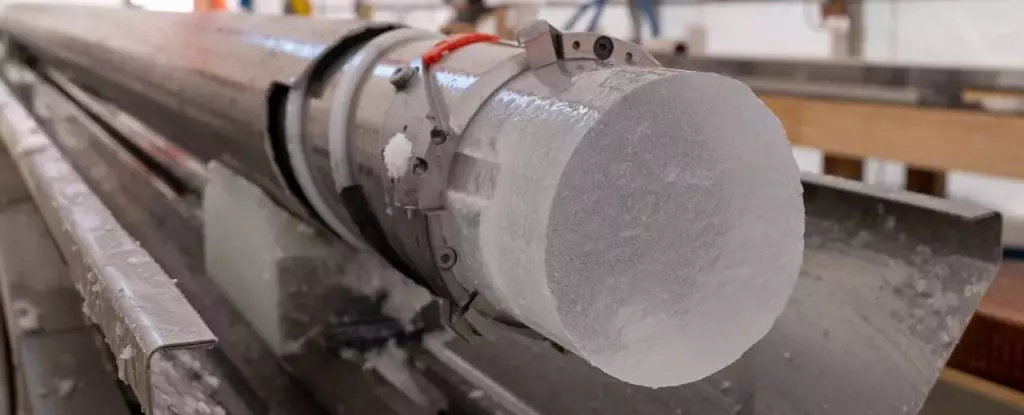In a groundbreaking exploration of our planet’s climatic past, a recent drilling operation in Antarctica has unearthed an extraordinary ice core sample potentially revealing an unbroken climatic timeline extending back over a million years. This monumental 2,800-meter-long core is not only the longest single ice core but also serves as a crucial repository of Earth’s atmospheric history, capturing vital data about past climatic conditions and greenhouse gas concentrations.
The significance of this ice core cannot be overstated. Each meter of this core is estimated to contain a chronological account of up to 13,000 years, offering a treasure trove of information about our climate system. As scientists dissect and analyze the ancient samples, they will glean insights that are essential for understanding both past and present climate dynamics, positioning this research at the forefront of the ongoing climate crisis debate.
Julien Westhoff, chief scientist with the European Project for Ice Coring in Antarctica (EPICA), emphasized the groundbreaking nature of the findings: “We have a strong indication that the uppermost 2,480 meters contain a climate record that goes back to 1.2 million years.” This remarkable timeline is essential for scientists aiming to understand the various climatic shifts that have occurred throughout Earth’s history and how these shifts might inform our current environmental challenges.
Previous ice core records, including those obtained in 2004, provided a glimpse into the Earth’s climate only up to about 740,000 years. The newly acquired core, however, pushes the boundaries of what we understand about climate events, including extreme episodes that have significantly impacted the development and survival of early human populations, particularly during the glaciation cycles.
Implications for Understanding Human History
Fourteen specific glacial and interglacial cycles are notable in the recent ice core findings, raising urgent questions about their implications for early human societies. Some researchers suggest that as many as 99 percent of early humans in Africa might have perished during severe cold periods, although this theory remains a subject of intense debate among scholars. The correlation between climatic shifts and human population dynamics will likely become clearer as the analyses of this ice core progress.
This ice core serves as a critical reference point, showcasing the raw power of natural cycles and the impact that anthropogenic activities have had on these systems. The findings may highlight how drastically human-induced climate change has derailed these natural cycles and stress the importance of promptly addressing climate change.
Carlo Barbante, director of EPICA, remarked on the scientific intrigue surrounding these findings: “This transition remains a scientific mystery, particularly regarding the role of greenhouse gases and ice sheet dynamics.” The dual relationship between greenhouse gas levels and global temperatures over hundreds of thousands of years is one that scientists are racing to decode. The potential for extending the ice core data’s reach beyond the current one of 1.2 million years opens up vast avenues for research and could fundamentally challenge existing climate models.
The drilling operation, set at Little Dome C, was strategically chosen based on radar surveys that revealed a thick accumulation of ice—essential for obtaining a continuous record of climatic changes. Situated high on Antarctica’s central plateau, the conditions were severe, with temperatures plummeting to -35 °C (-31 °F), but the groundbreaking potential of the findings outweighed these logistical challenges.
As researchers eagerly delve into the data from this unprecedented drilling project, the EPICA team’s commitment to climate research illuminates a critical juncture in our understanding of Earth’s climatic history. The profound insights that will emerge from the ice core analysis could be pivotal for reconstructing climate patterns and understanding climate resilience moving forward.
Richard Alley, a respected climate scientist who observed but did not participate in the recent drilling efforts, described the importance of EPICA’s findings as “truly, truly, amazingly fantastic.” With the Antarctic ice sheet comprising 90 percent of the world’s ice, this drilling effort represents not only a scientific achievement but also a beacon of hope in modifying our approaches to climate policy and sustainability. The journey into the ancient past must inform the steps we take for a sustainable future, and the treasures hiding within the ice of Antarctica may prove crucial in guiding those endeavors.


Leave a Reply